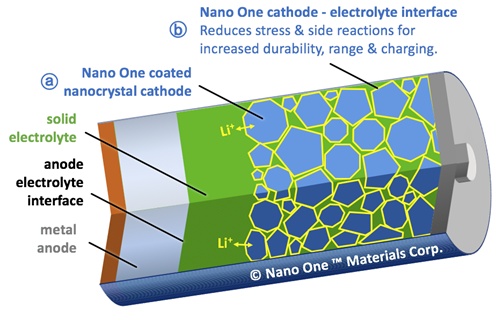
Nano One Materials (TSX-V: NNO) announced that its high-performance lithium-ion battery cathode materials, which are produced at a low cost using proprietary technology, tested positively in solid-state batteries for electric vehicles.
In a press release, the Canadian company said that it is working with various automotive manufacturers to evaluate its One-Pot process and coated lithium nickel manganese oxide cathode materials (LNMO).
The coated LNMO, also referred to as high voltage spinel, stabilizes the interface between cathode and electrolyte because it does not expand and stress the cathode-electrolyte interface like other cathode materials, and also because the coating protects the cathode from side-reactions with the electrolyte while allowing the rapid transfer of lithium ions between the electrolyte and the cathode.
“In comparison to other cathode materials, HVS is faster charging and operates at higher voltage enabling increased power and energy densities,” the firm said in the media brief. “HVS is also free of cobalt and the associated supply chain risk.”
In the view of Stephen Campbell, CTO of Nano One Materials, the main goal behind all the research on solid-state batteries is to replace flammable liquid electrolytes with solid materials that improve safety, power and energy density of batteries.
